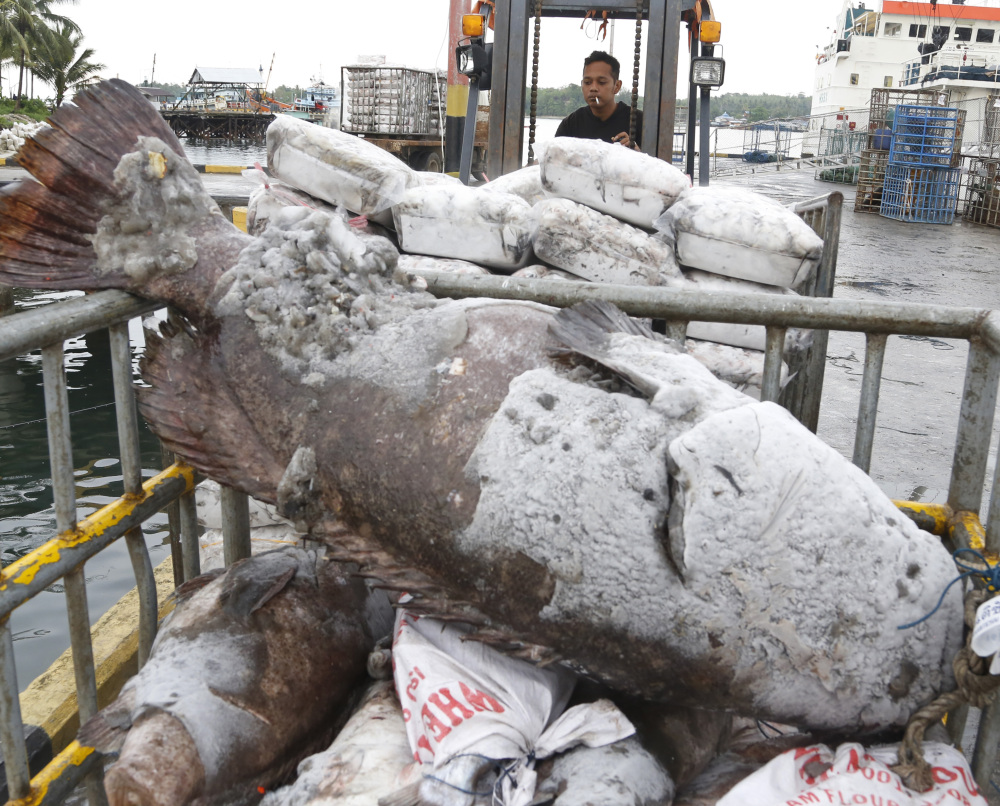WASHINGTON — Fourteen years after the U.S. first criticized Thailand for labor abuse in its annual trafficking report, seafood caught by slaves on Thai boats is still slipping into the supply chains of major American stores and supermarkets.
The U.S. has not enforced its own law banning the import of goods made with forced labor since 2000 because of significant loopholes, The Associated Press has found. It has also spared Thailand from sanctions slapped on other countries with similar records because of a complex political relationship that includes cooperation against terrorism.
The question of labor abuse in Thailand will come up at a congressional hearing Wednesday, in light of an AP investigation that found hundreds of men beaten, starved, forced to work with little or no pay and even held in a cage on the remote island village of Benjina, Indonesia.
While officials at federal agencies would not directly answer why the law and sanctions are not applied, they pointed out that the U.S. State Department last year blacklisted Thailand as among the worst offenders in its report.
“No one can claim ignorance anymore,” said Phil Robertson, deputy director of Human Rights Watch’s Asia division. “This is a test case for Washington as much as Bangkok.”
Hlaing Min, an escaped migrant fisherman, begged the U.S. for help.
“Basically, we are slaves – and slavery is the only word that I can find – but our condition is worse than slavery,” he said. “On behalf of all the fishermen here, I request to the congressmen that the U.S. stop buying all fish from Thailand.… This fish, we caught it with our blood and sweat, but we don’t get a single benefit from it.”
While U.S. seafood companies strongly condemn labor abuse, some say cutting off all imports from an entire country takes away their power to change anything. And the Thai government says it is taking steps to solve the problem, including the creation of a new registry for migrant workers and increased punishment for traffickers.
The U.S. Tariff Act of 1930 gives Customs and Border Protection the authority to seize shipments where forced labor is suspected and block further imports. However, it has been used only 39 times in 85 years.
To start an investigation, Customs has to receive a petition from anyone – a business, an agency, even a non-citizen – showing “reasonably but not conclusively” that imports were made at least in part with forced labor. But spokesman Michael Friel said that in the last four years, Customs has received “only a handful of petitions,” and none on seafood from Thailand.
Experts also point to two gaping loopholes. Goods made with forced labor must be allowed into the U.S. if consumer demand cannot be met without them. And it’s hard, if not impossible, to prove who caught the fish in a particular container, because different batches generally mix together at processing plants.
Also, former Justice Department attorney Jim Rubin said, Customs can’t stop trafficked goods without the help of other federal agencies to investigate overseas.
Apart from the law, the U.S. response to Thailand is shaped by political considerations. Last year, after several waivers, the State Department dropped the Southeast Asian nation for the first time to the lowest rank in its trafficking report, mentioning forced labor in the seafood industry. Countries with the same ranking, such as Cuba, Iran, North Korea, Sudan and Syria, faced full or partial sanctions. But Thailand did not, receiving $18.5 million in aid from U.S. taxpayers last year.
The U.S. has already suspended $4.7 million in military funding to Thailand because of a military coup last year. However, the country is still considered a critical ally against terrorism. The U.S. also wants strong relations with Thailand as a counterweight to the growing influence of China.
Copy the Story LinkSend questions/comments to the editors.



Success. Please wait for the page to reload. If the page does not reload within 5 seconds, please refresh the page.
Enter your email and password to access comments.
Hi, to comment on stories you must . This profile is in addition to your subscription and website login.
Already have a commenting profile? .
Invalid username/password.
Please check your email to confirm and complete your registration.
Only subscribers are eligible to post comments. Please subscribe or login first for digital access. Here’s why.
Use the form below to reset your password. When you've submitted your account email, we will send an email with a reset code.